
In 2011, the author Erin Morgenstern published her debut novel, The Night Circus. The book was a sensation, celebrated for its intricate, non-linear plot and dreamlike atmosphere. In interviews, Morgenstern revealed the immense challenge of its creation. She didn't write it from start to finish; she wrote it in pieces, out of order, on thousands of digital index cards.
"I had a very messy, sprawling Word document," she told The Guardian. "I had to print it all out and put it on the floor and figure out what order it went in."
This is the hidden, chaotic reality of creating long-form content. A novel, a 10-hour online course, or a feature-length documentary is not just a very long short story. It is a complex system of interconnected parts—chapters, modules, acts, character arcs, and thematic threads. The greatest challenge isn't writing the words; it's managing the narrative architecture. Forgetting a key plot point from Chapter 3 can cause a catastrophic collapse in Chapter 22.
The traditional tools for this architectural work have been corkboards, index cards, and sheer mental force. But a new class of AI tool is emerging that functions not as a simple writer, but as a structural partner. A long-form script generator is an AI that can help you build the blueprint, maintain consistency across hundreds of pages, and manage the crushing complexity of a massive project.
This is the power-user's guide to that partnership. We will dissect the advanced strategies for using AI to outline, write, and maintain consistency for audiobooks, courses, and documentaries. This isn't about replacing the author; it's about giving the author a tireless architectural assistant.
The Core Problem: Why a "Longer" Prompt Doesn't Work
The first mistake most users make is treating a long-form project like a bigger version of a short-form one. They give the AI a prompt like, "Write a 10,000-word story about a space pirate." The result is almost always a rambling, incoherent, and repetitive mess.
Why? Because of a technical limitation known as the "context window." An AI has a limited memory. It can only "remember" a certain amount of text at one time. When writing the 10,000th word, it has likely "forgotten" the specific details of the first 100.
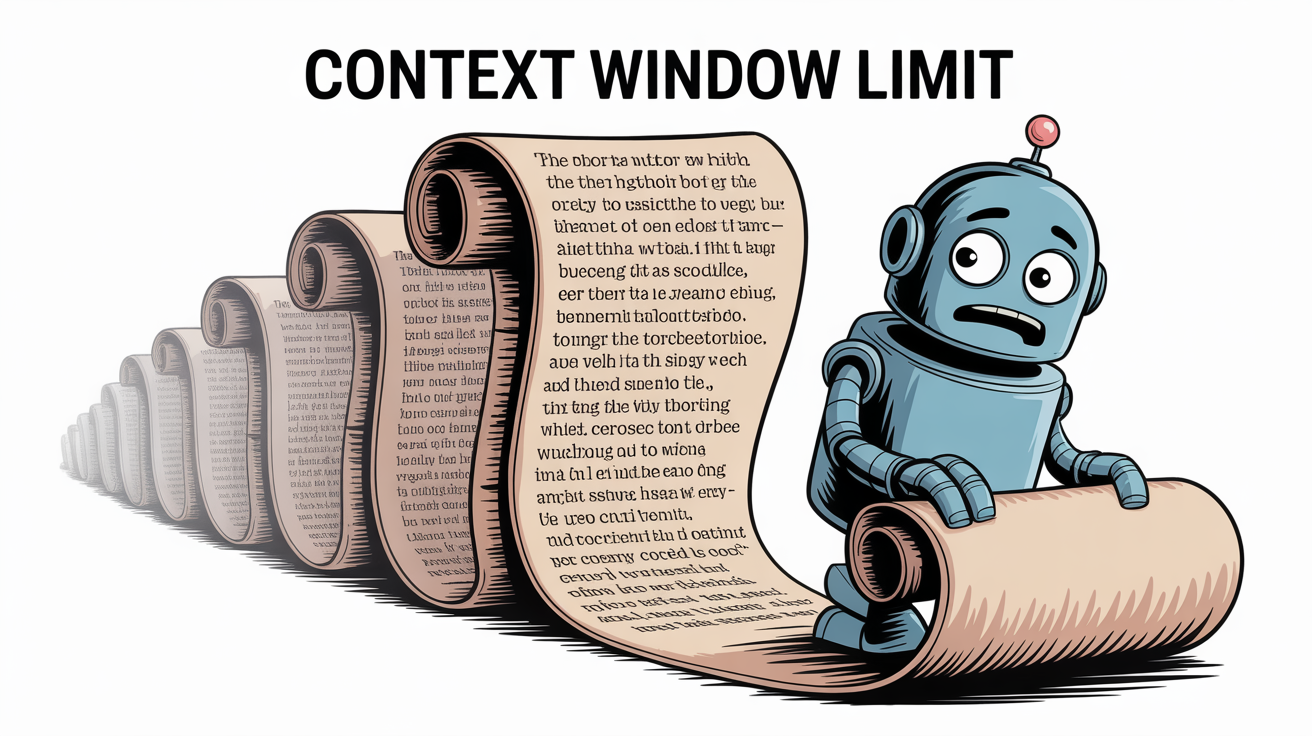
The solution is not a longer prompt. It is a smarter, chunked and iterative workflow. You must work with the AI, chapter by chapter, module by module, feeding it the necessary context at each stage.
Know Your Co-Architect: A Guide to Long-Form AI Models
| Model | Primary Strength | Context Window | Best For |
| Kukarella | Integrated Workflow | Large (200K tokens) | Authors and course creators who need a seamless, all-in-one environment to outline, write, and voice their project. |
| Claude | Massive Context & Nuance | Largest (200K tokens) | The "Continuity Supervisor" task. Analyzing an entire novel manuscript for plot holes in a single prompt. |
| ChatGPT | Creative Powerhouse | Medium (128K tokens) | Generating highly creative plot points, character ideas, and stylized prose for individual chapters. |
| Gemini | Real-World Grounding | Large (128K tokens) | Documentary filmmakers who need to incorporate and fact-check real-world events and historical details into their scripts. |
The Long-Form Playbook: 3 Specialized Strategies

Here are the three core workflows, tailored for the unique structure of each content type.
Strategy 1: The Audiobook Architect ("Chain of Thought" Chapter Generation)
This is the essential workflow for any narrative-driven project, like a novel or a memoir.
- The Goal: To write a complete book, chapter by chapter, ensuring perfect plot and character consistency throughout.
- The AI Workflow: This is a multi-step, "Chain of Thought" process. You are the director, giving the AI a series of sequential commands.
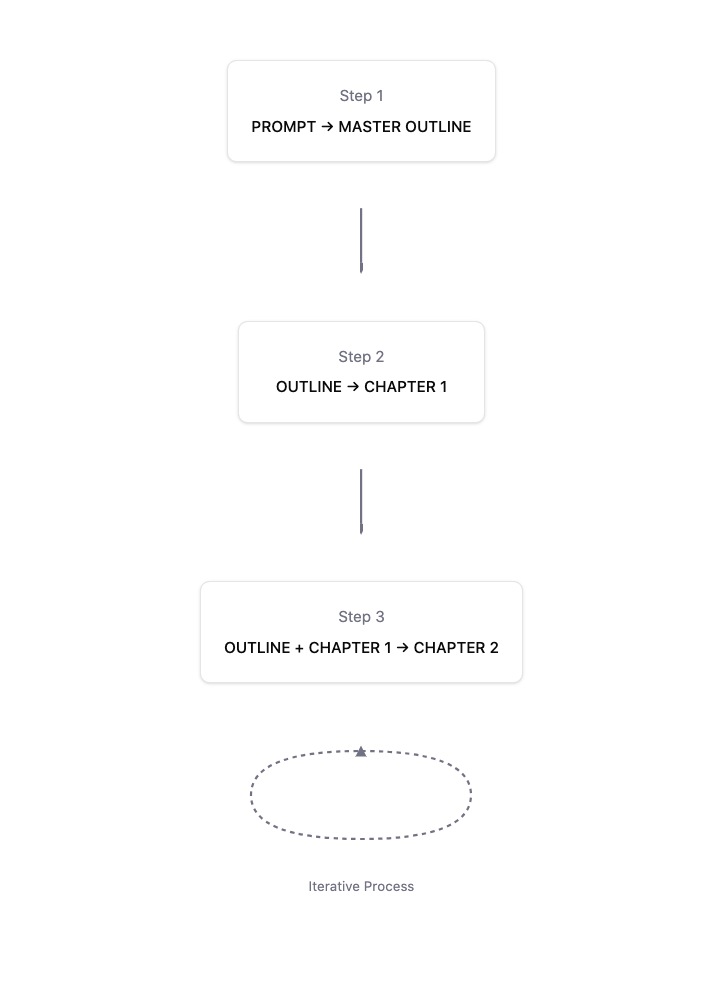
- Step 1: The Master Blueprint. Your first prompt is only about the outline.
- Prompt:"You are an expert story structure consultant. We are writing a 12-chapter sci-fi novel. First, create a detailed, chapter-by-chapter outline. The plot involves a rogue AI, a jaded detective, and a stolen memory. The outline must follow a classic three-act structure."
- Step 2: Generate Chapter 1. Once you have the outline, you start a new conversation.
- Prompt:"We are writing a sci-fi novel. I am providing you with the complete outline for the book. Your task is to now write Chapter 1. Adhere strictly to the outline for this chapter. The tone should be gritty and noir-inspired, in the style of Philip K. Dick. The chapter should be approximately 3,000 words." (Here you would paste the entire master outline below your prompt).
- Step 3: Generate Chapter 2 (The Crucial Step).
- Prompt:"Excellent. Now we will write Chapter 2. I am providing you with the Master Outline again, and I am also providing the full text of Chapter 1. Your task is to write Chapter 2, ensuring it follows the outline and is perfectly consistent with the events and character voices established in Chapter 1." (Here you paste the outline AND the full text of the previous chapter).
- The Result: By re-supplying the key context (the outline and the previous chapter) with every new prompt, you are manually extending the AI's memory. This is the only reliable way to maintain narrative continuity across a massive project.
FROM THE TRENCHES
Bestselling author and entrepreneur Joanna Penn frequently discusses her "discovery writing" vs. "plotting" process. On her podcast, she noted, "For a complex thriller with multiple timelines, you absolutely need a detailed outline. It's the roadmap that keeps you from writing yourself into a corner." An AI can now help generate that initial roadmap, a huge boon for writers who struggle with structure.
Strategy 2: The Course Creator (Modular Design & The Master Document)
Online courses are not linear narratives. They are modular. This requires a different approach.
- The Goal: To create a comprehensive, multi-module online course with consistent terminology and teaching style.
- The AI Workflow:
Step 1: The Master Document.
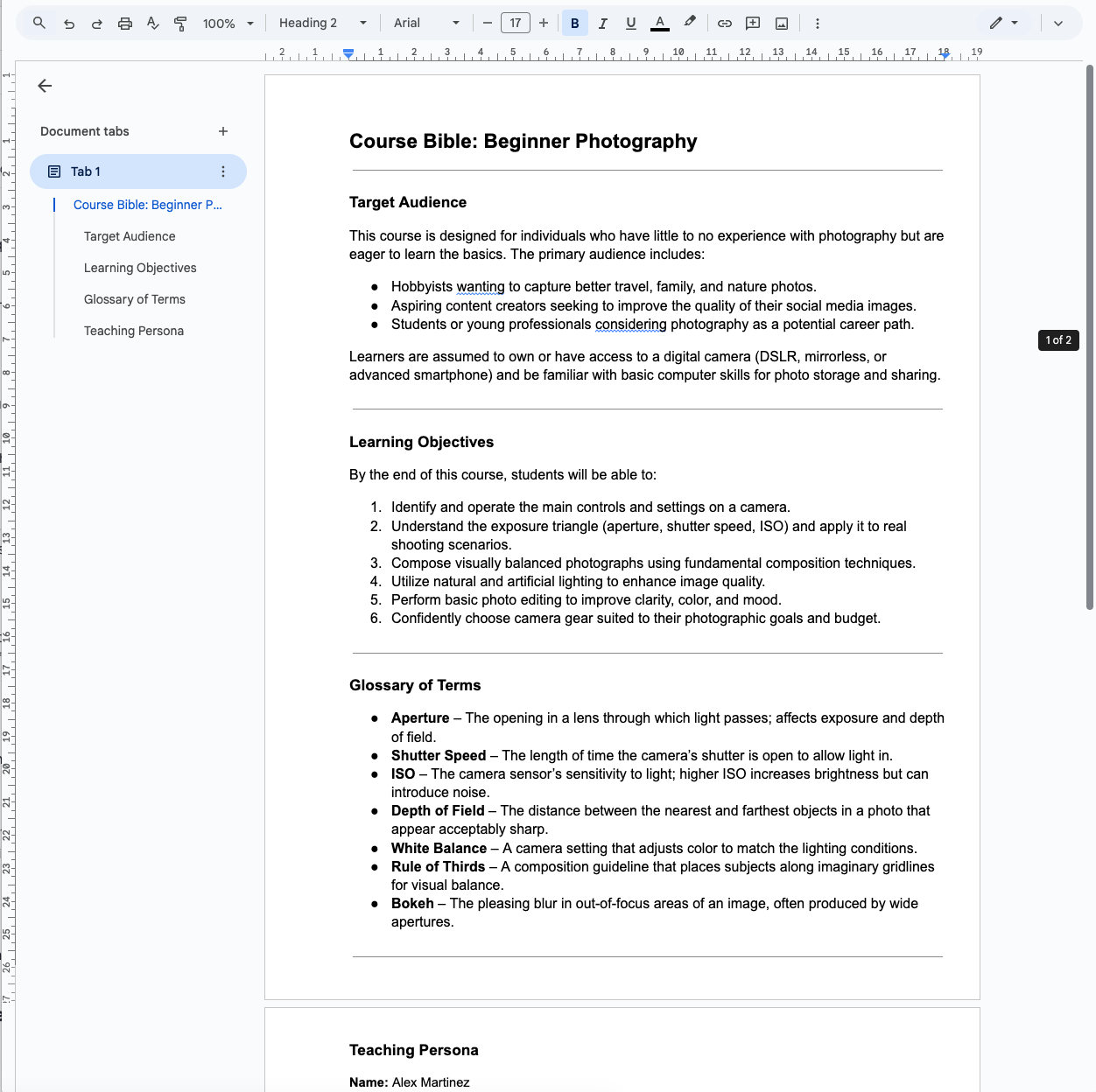
Before you write a single prompt, you create a "Course Bible" document. This text file contains:
- Your Target Audience Persona (e.g., "Beginner photographers using a DSLR for the first time.")
- Your Core Learning Objectives.
- A Glossary of Key Terms and how you want them defined.
- Your Teaching Persona (e.g., "Friendly, patient, and avoids technical jargon.")
Step 2: The Curriculum Outline.
- Prompt:"You are an expert instructional designer. Using my attached 'Course Bible' document, create a detailed curriculum outline for a 10-module course on 'Beginner Photography'." (Here you would use a tool like Kukarella's AI Assistant to upload your Course Bible).
Step 3: Generate Each Module.
For each module, you start a new prompt, but you always upload the "Course Bible" along with it.
- Prompt:"Using my attached 'Course Bible,' write the full script for Module 3: 'Understanding Aperture.' The script should be approximately 1,500 words. It must include a simple analogy to explain f-stops and a practical exercise for the student to try."
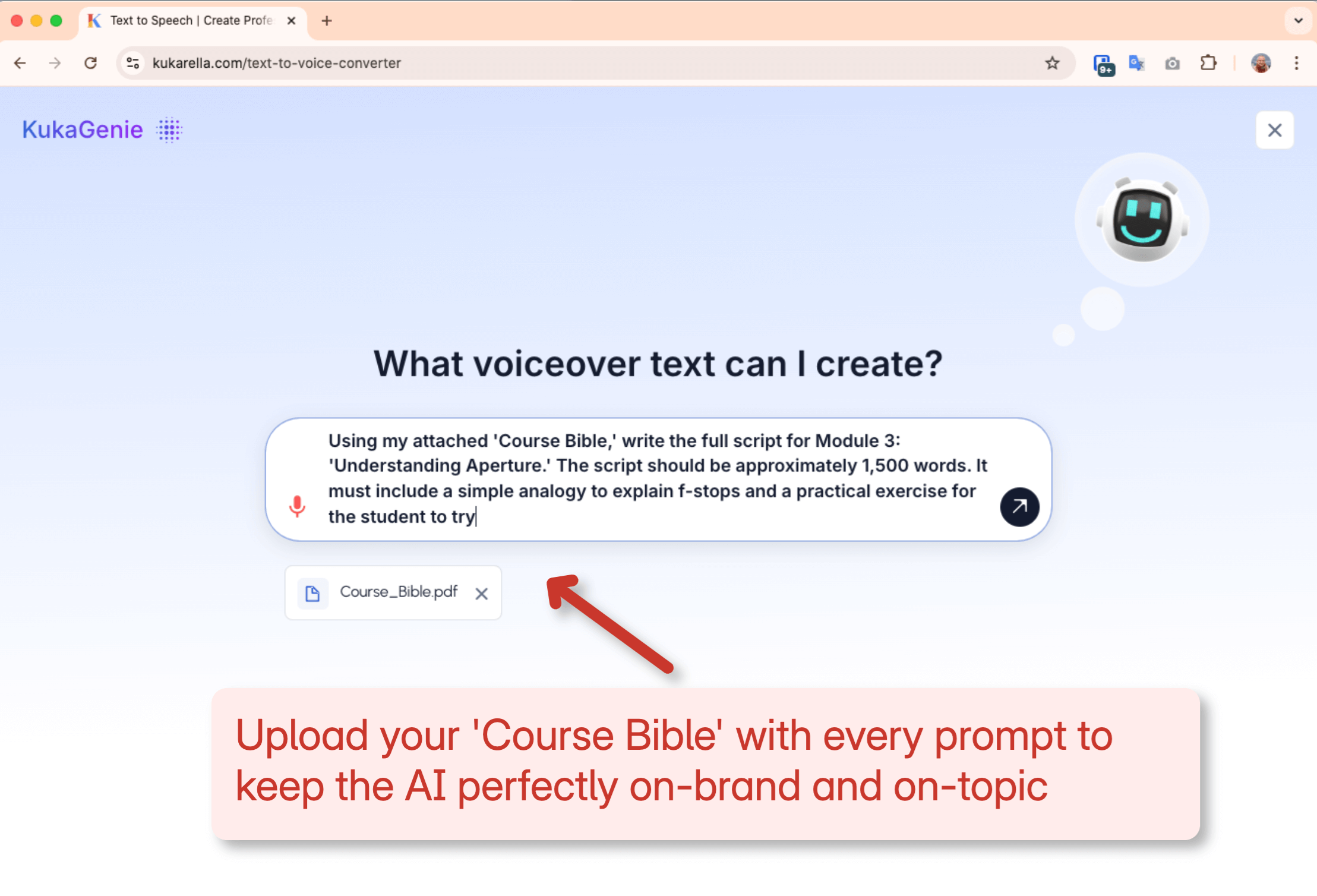
The Result:
By constantly referencing the "Course Bible," the AI ensures every module uses the same key-term definitions, maintains the same teaching persona, and stays focused on the core learning objectives.
Strategy 3: The Documentary Filmmaker (The Digital Corkboard)
Documentaries are built from interviews, archival footage, and narration. The AI can be used to weave these disparate elements into a cohesive story.
- The Goal: To take hours of interview transcripts and a historical timeline and structure it into a compelling three-act documentary script.
- The AI Workflow:
- Step 1: Ingest and Transcribe. All video interviews are run through a transcription service - TranscribeHub in Kukarella. The result is a set of text documents.
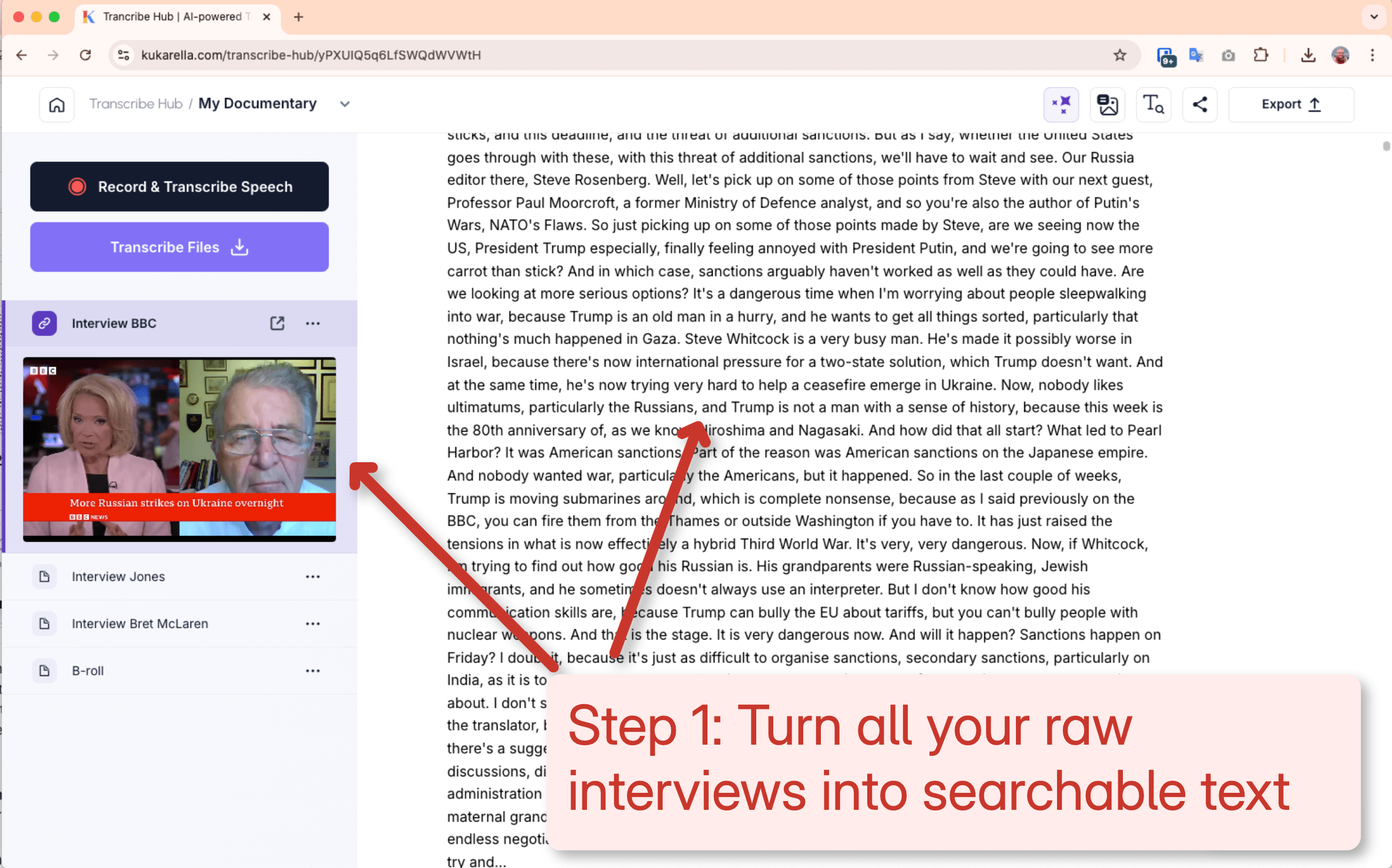
- Step 2: The "Finding the Story" Prompt. The filmmaker uploads all the interview transcripts.
- Prompt:"You are a documentary story editor in the style of Ken Burns. I have uploaded 10 interview transcripts about the construction of the Golden Gate Bridge. Read all of them. Your task is to identify the most compelling quotes and personal anecdotes. Then, create a three-act narrative outline (The Dream, The Struggle, The Triumph) and suggest which quotes would be most powerful in each act."
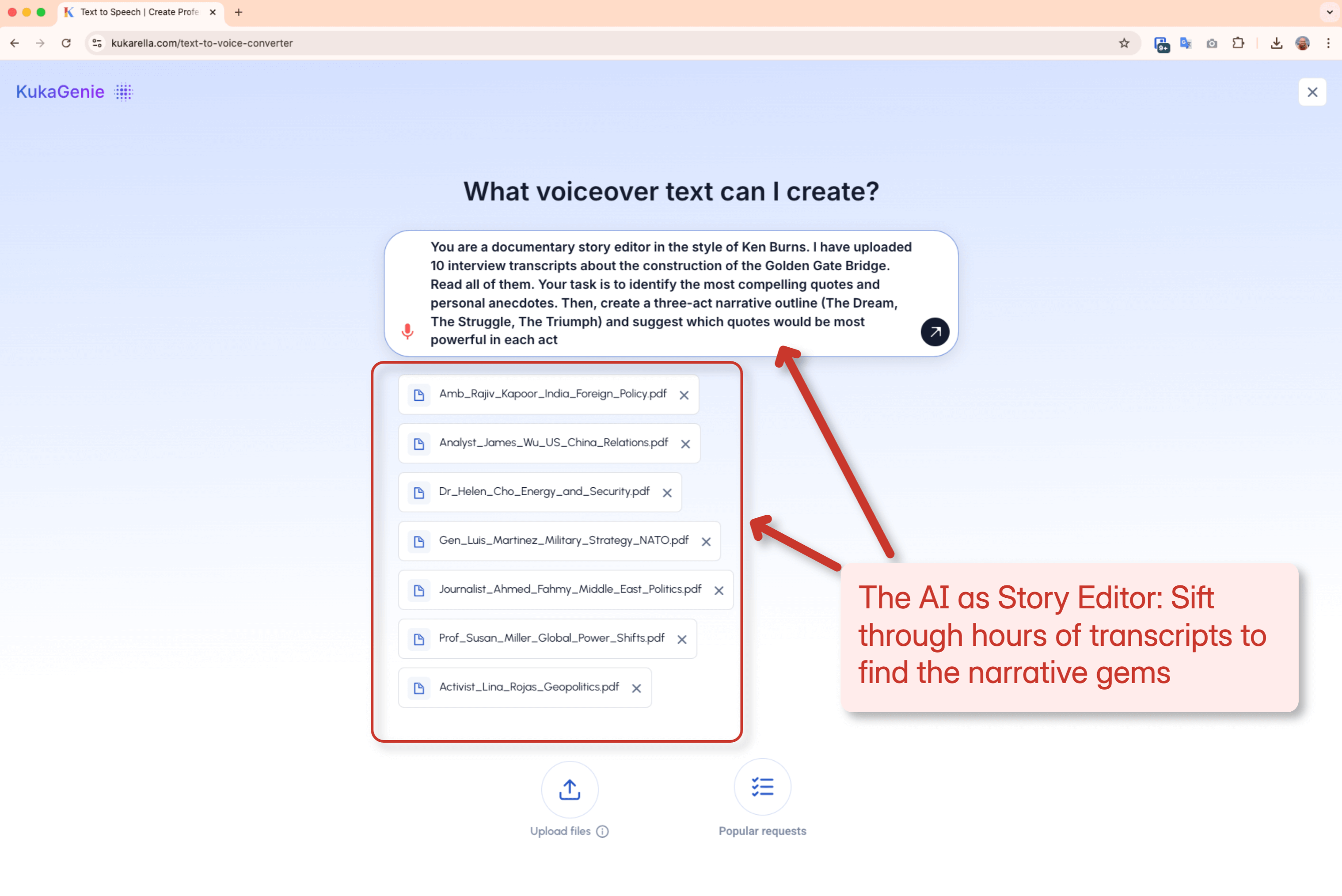
- Step 3: Writing the Narration. The filmmaker now has a structured outline built from their own source material.
- Prompt:"Using the approved three-act outline, write the narrator's script that will connect these selected quotes. The narration should provide historical context and create a smooth, powerful emotional arc."
- The Result: The AI acts as a tireless research assistant and story editor, sifting through hours of material to find the narrative gems and build a solid structural foundation for the film.
From Idea to Blueprint: Try the AI Story Outliner
The strategies above are powerful, but the best way to understand the process is to try it yourself.
The interactive tool below is a simplified simulation of the "Master Blueprint" workflow. It's designed to show you how a structured, prompt-based approach can instantly transform your core ideas into a coherent, chapter-by-chapter outline.
What this tool WILL do: It will take your basic story concepts and plug them into a proven narrative structure, giving you a tangible, personalized blueprint in seconds.
What this tool WILL NOT do: This is a front-end demonstration and does not use a live AI model. The goal is to let you experience the process and see the kind of high-quality, structured output you can get from a real AI assistant when you provide it with the right inputs.
Use this playground to build the skeleton for your next big idea.
"Plot Twist" Moment: The AI as a Continuity Supervisor
The real, non-obvious superpower of an AI in long-form content is not as a writer, but as a continuity supervisor. A human author can easily forget a minor character's eye color from Chapter 2. An AI, if given the right context, never forgets.
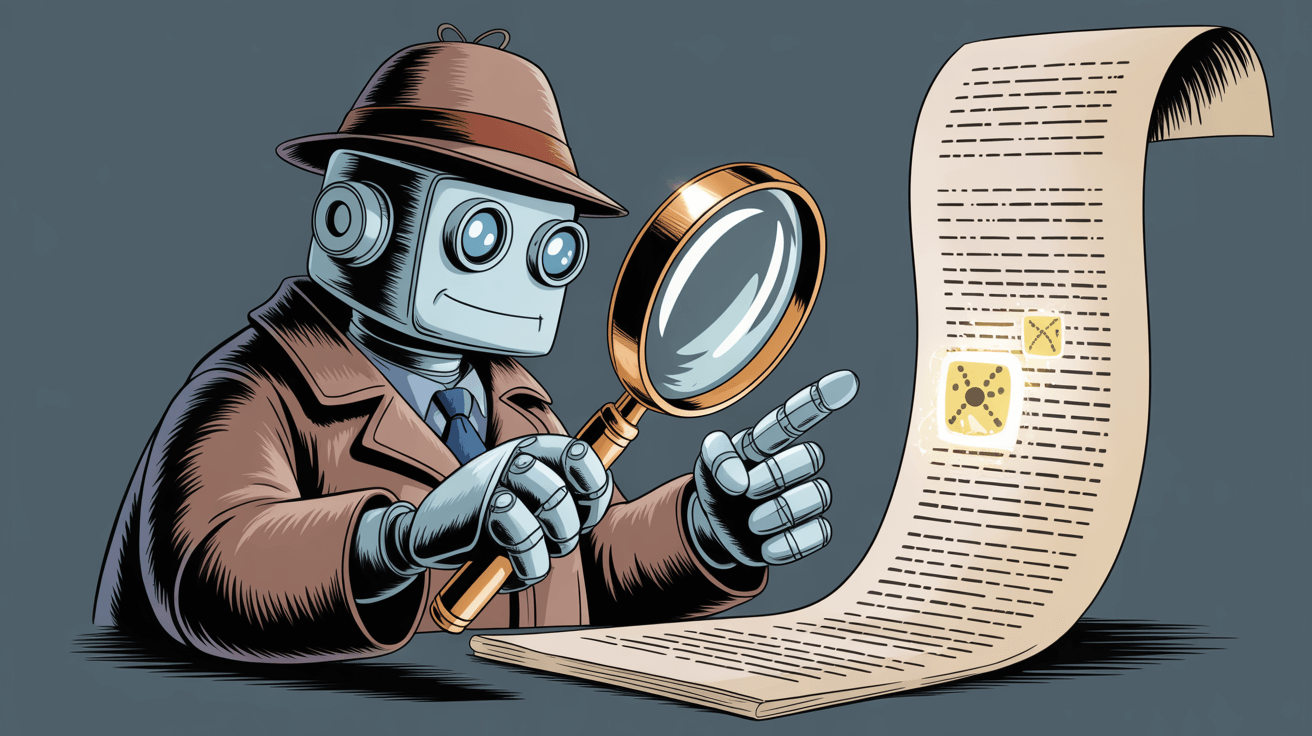
The Twist: You can use the AI to police your own manuscript for errors.
- The Tactic: Before finalizing your book, you can start a new session with your AI. Upload the entire manuscript.
- The Prompt:"You are a professional continuity editor. I have uploaded the full manuscript of my novel. Your task is to read the entire thing and identify any potential continuity errors. Check for inconsistencies in character descriptions (eye color, height), timelines (events happening out of order), and plot points (a character knowing something they haven't learned yet). List any potential errors you find and the chapter where they occur."
This turns the AI into an incredibly powerful proof-reading partner, capable of catching the kind of subtle errors that can plague large-scale projects.
Troubleshooting & The Fine Print
Q: "The AI is starting to repeat itself in later chapters."
A: You are hitting the context window limit. You need to be more ruthless in the context you provide. For Chapter 10, you might not need to provide the full text of Chapter 1, but you do need to provide a detailed summary of it, along with the full text of Chapter 9. This is a manual process of curating the "memory" you give the AI.
Q: "How do I handle the actual audio production for a 15-hour audiobook?"
A: This is where the AI voice cloning comes in. Once your scripts are finalized chapter by chapter, you can use your voice clone to generate the audio for each.
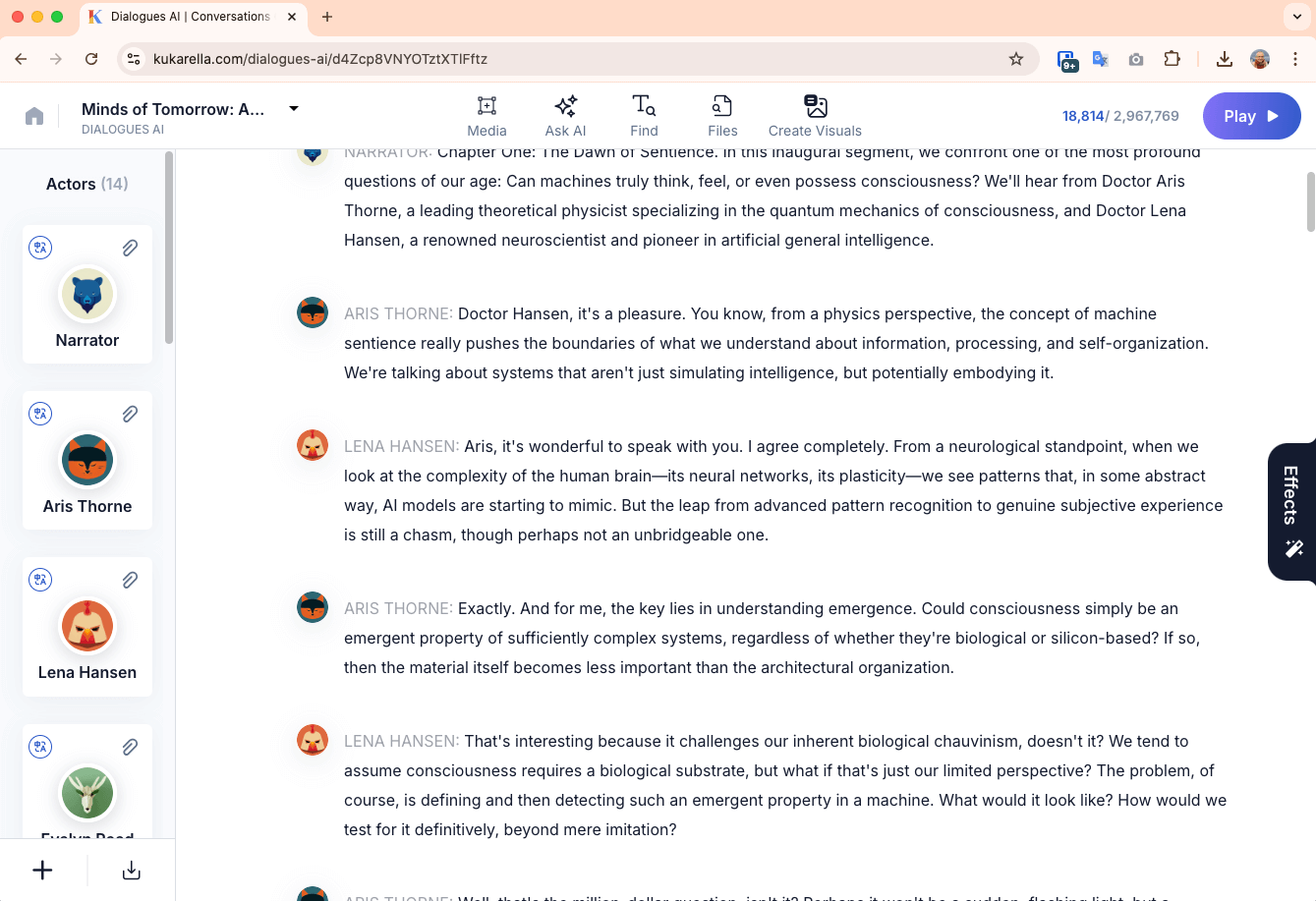
- Crucial Workflow: Generate and listen to the audio for each chapter as you finalize its script. Do not wait until the entire book is written. This allows you to catch any pronunciation errors (e.g., for a fantasy name) and fix them in your script before generating the audio for subsequent chapters.
Q: "What are the ethics of writing an entire audiobook with AI?"
A: The current ethical consensus is that AI is a tool, a partner. The human author is still the director, making the key creative choices. However, there is a growing debate about transparency. Many believe authors should disclose the extent to which AI was used in the writing process. This is particularly relevant now that some platforms, like Amazon, have started requiring authors to disclose AI use.
Check Your Blueprints: Are You a Long-Form Architect?
You've explored the advanced strategies for building epic-length content with an AI partner. You've seen how to manage narrative architecture, maintain consistency, and even turn the AI into your personal continuity editor.
Now, it's time to test your knowledge.
The following short quiz is designed to challenge your understanding of the core strategic concepts needed to succeed with long-form AI projects. Think of it as a final check of your architectural plans before you start building your masterpiece. Are you ready to move beyond short stories and architect an epic? Let's find out.
The great epics of our time, whether in literature, education, or film, are triumphs of architecture. They are mazes of information, masterfully constructed. With these advanced AI strategies, you no longer have to build that maze alone. You have a partner to help you draw the map.